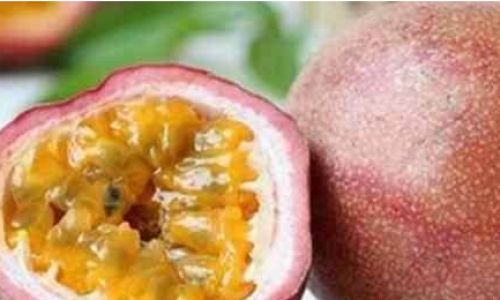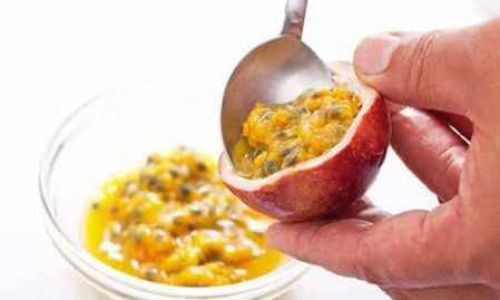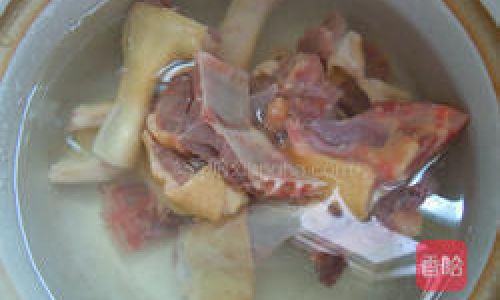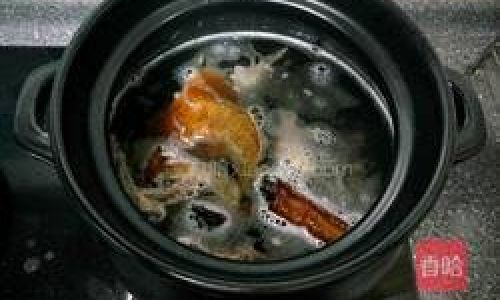Table of content
- Ripeness at Harvest
- Storage Temperature
- Humidity Levels
- Packaging Methods
- Whole, Uncut Passion Fruit
- Cut or Sliced Passion Fruit
- Frozen Passion Fruit
- Visual Cues
- Olfactory Indicators
- Textural Changes
- Purchase Wisely
- Ripening Techniques
- Storage Hacks
- Creative Culinary Uses
- Countertop Storage
- Root Cellar or Basement
- Canning or Jarring
Passion fruit, with its vibrant purple or yellow exterior and tangy, aromatic pulp, is a tropical treasure cherished globally for its unique flavor and nutritional benefits. Whether enjoyed fresh, juiced, or incorporated into desserts and beverages, this exotic fruit adds a burst of tropical flair to culinary creations. However, like many perishable produce items, passion fruit requires proper storage to maintain its quality and extend its shelf life. One of the most common questions among home cooks and fruit enthusiasts is: How long can passion fruit be stored in the refrigerator? This article delves into the science of passion fruit preservation, exploring factors that influence its longevity, optimal storage methods, and signs of spoilage to ensure you savor every last drop of its zesty goodness.
Understanding Passion Fruit: A Brief Overview
Before diving into storage techniques, it’s essential to grasp the basics of passion fruit biology. Native to South America, passion fruit (Passiflora edulis) thrives in tropical and subtropical climates. The fruit’s thick, leathery rind encases a jelly-like pulp filled with crunchy, edible seeds. Its flavor profile balances sweetness and tartness, making it a versatile ingredient in both sweet and savory dishes.
Passion fruit is rich in antioxidants, vitamins (particularly vitamin C and vitamin A), and dietary fiber, contributing to its reputation as a superfood. However, its delicate nature means it is prone to rapid deterioration if not stored correctly. Understanding the interplay between ripeness, environmental conditions, and handling practices is key to maximizing its freshness.
Factors Affecting Passion Fruit Shelf Life
The longevity of passion fruit in the refrigerator depends on several interconnected factors. These include:
Ripeness at Harvest
Passion fruit is typically harvested when it reaches physiological maturity but before full ripening. This ensures the fruit can withstand transport without spoiling. However, the stage of ripeness when purchased significantly impacts storage life:

- Unripe (Green): Firm, green passion fruit has the longest shelf life. It can be stored at room temperature to ripen further.
- Ripe (Purple/Yellow): Fully ripe fruit, characterized by wrinkled skin and a fragrant aroma, has a shorter window for consumption or storage.
Storage Temperature
Temperature plays a pivotal role in slowing down the enzymatic and microbial activities that cause spoilage. The refrigerator’s cold environment (typically 40°F/4°C) significantly extends shelf life compared to room temperature. However, extreme cold can damage the fruit’s texture, so balance is critical.
Humidity Levels
Passion fruit thrives in humid environments. Low humidity in refrigerators can lead to dehydration, causing the rind to shrivel and the pulp to dry out. Using breathable packaging helps maintain optimal moisture levels.
Packaging Methods
The way passion fruit is stored—whether loose, in plastic bags, or airtight containers—affects airflow, humidity, and exposure to ethylene gas (a ripening hormone emitted by some fruits). Proper packaging minimizes spoilage risks.
How Long Does Passion Fruit Last in the Refrigerator?
The answer varies based on the fruit’s condition and storage method:
Whole, Uncut Passion Fruit
- Storage Time: 2–4 weeks
- Conditions: Store in the refrigerator’s crisper drawer, ideally in a perforated plastic bag or breathable container to regulate humidity. Avoid sealing tightly, as excess moisture can promote mold.
- Why It Works: The refrigerator’s cold slows ripening, while the crisper drawer’s controlled humidity prevents dehydration.
Cut or Sliced Passion Fruit
- Storage Time: 3–5 days
- Conditions: Place the pulp in an airtight container or covered with plastic wrap to prevent oxidation and flavor loss.
- Why It Works: Exposing the pulp to air accelerates spoilage, so minimizing contact with oxygen is crucial.
Frozen Passion Fruit
- Storage Time: 6–12 months
- Conditions: Purée the pulp, remove seeds (optional), and freeze in ice cube trays or airtight freezer bags.
- Why It Works: Freezing halts microbial growth and enzymatic activity, preserving flavor and texture for extended periods.
Signs of Spoilage: When to Discard Passion Fruit
Even with optimal storage, passion fruit will eventually spoil. Recognizing the signs of spoilage ensures food safety:
Visual Cues
- Mold Growth: Fuzzy patches on the rind or pulp indicate fungal contamination.
- Discoloration: Brown or blackened areas on the skin or pulp signal decay.
- Shriveled Rind: While slight wrinkling is normal for ripe fruit, excessive shriveling suggests dehydration or advanced age.
Olfactory Indicators
- Sour or Fermented Odor: A sharp, vinegar-like smell replaces the fruit’s natural sweet-tart aroma.
- Musty Scent: Earthy or moldy odors indicate microbial activity.
Textural Changes
- Mushy Pulp: The pulp becomes overly soft, losing its jelly-like consistency.
- Leakage: Liquid oozing from the rind or pulp is a red flag.
Pro Tips for Extending Passion Fruit Freshness
Maximize shelf life with these expert-approved strategies:

Purchase Wisely
- Check for Firmness: Select unblemished fruits with smooth, taut skin. Avoid those with dents or soft spots.
- Smell Test: Ripe passion fruit should emit a sweet, floral fragrance.
Ripening Techniques
- Countertop Ripening: Place unripe fruit in a paper bag at room temperature (68–77°F/20–25°C) for 2–5 days.
- Ethylene Sensitivity: Avoid storing near ethylene-producing fruits (e.g., bananas, apples), as this accelerates ripening.
Storage Hacks
- Layer with Paper Towels: Line the refrigerator drawer with paper towels to absorb excess moisture.
- Avoid Overcrowding: Ensure adequate airflow around the fruit to prevent mold.
Creative Culinary Uses
- Freeze Pulp: Portion puréed pulp into ice cube trays for easy addition to smoothies or sauces.
- Dehydrate Rinds: Use dried passion fruit rinds to infuse teas or cocktails.
Passion Fruit in the Freezer: A Long-Term Solution
Freezing is an excellent way to preserve passion fruit for future use. Follow these steps:
- Preparation: Halve the fruit and scoop out the pulp. Remove seeds if desired (they can be gritty).
- Packaging: Transfer the pulp to freezer-safe bags or containers, leaving ½ inch of headspace for expansion.
- Labeling: Date and label the containers for easy tracking.
- Thawing: Defrost in the refrigerator overnight or use frozen pulp directly in recipes like sorbets or marinades.
Common Mistakes to Avoid
- Storing at Room Temperature Post-Ripening: Once ripe, passion fruit deteriorates rapidly unless refrigerated.
- Using Damaged Packaging: Torn plastic bags or ill-fitting lids expose the fruit to air and contaminants.
- Ignoring Spoilage Signs: Consuming spoiled passion fruit can cause foodborne illness.
The Science Behind Passion Fruit Preservation
Passion fruit’s perishability stems from its high water content (70–80%) and susceptibility to microbial invasion. The refrigerator’s cold temperatures slow:
- Respiration: The fruit’s metabolic processes, reducing energy consumption and ripening.
- Microbial Growth: Bacteria and molds thrive in warmer conditions, so cold storage inhibits their proliferation.
- Enzymatic Browning: Exposure to oxygen triggers enzymes that darken the pulp, but refrigeration and acidification (e.g., lemon juice) can mitigate this.
Beyond the Refrigerator: Alternative Storage Methods
While the refrigerator is ideal for short-term storage, other methods suit different needs:
Countertop Storage
- Best For: Unripe fruit.
- Duration: 3–7 days.
- Tips: Place in a cool, dark spot away from direct sunlight.
Root Cellar or Basement
- Best For: Bulk storage in cooler climates.
- Conditions: Maintain temperatures between 50–60°F (10–15°C) and high humidity.
Canning or Jarring
- Best For: Preserving pulp for sauces or fillings.
- Method: Heat-process jars of passion fruit purée to seal and sterilize.
Conclusion: Savoring Passion Fruit at Its Peak
Passion fruit’s ephemeral beauty demands mindful storage to unlock its full potential. By understanding the interplay of ripeness, temperature, and packaging, you can extend its shelf life from a few days to several months. Whether you’re a home cook stocking up for tropical recipes or a health enthusiast seeking vitamin C-rich snacks, these strategies ensure your passion fruit remains vibrant, flavorful, and safe to enjoy.
Remember: Freshness is a spectrum. While refrigeration buys time, the best way to savor passion fruit is to consume it when it’s ripe and radiant. So the next time you bring home this exotic gem, handle it with care—and let its tangy sweetness transport you to sun-kissed groves, one bite at a time.




0 comments